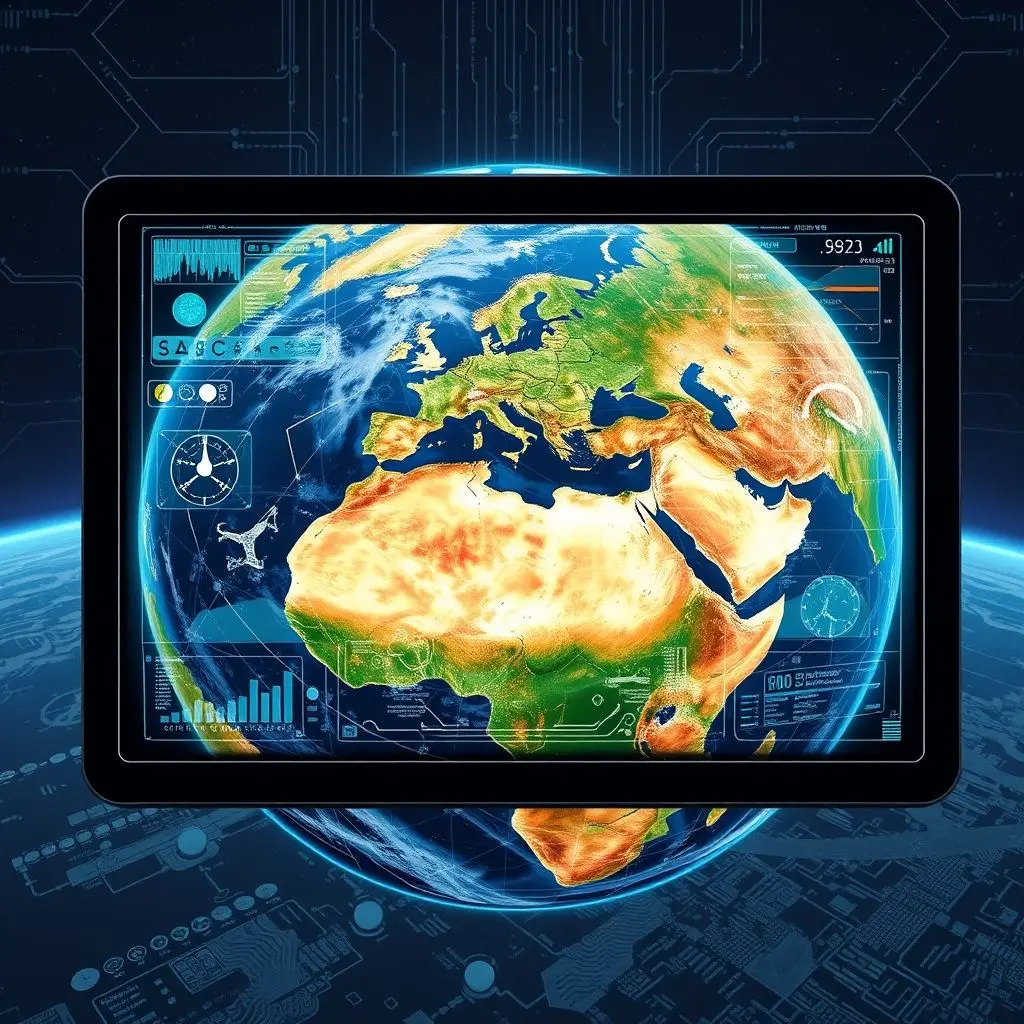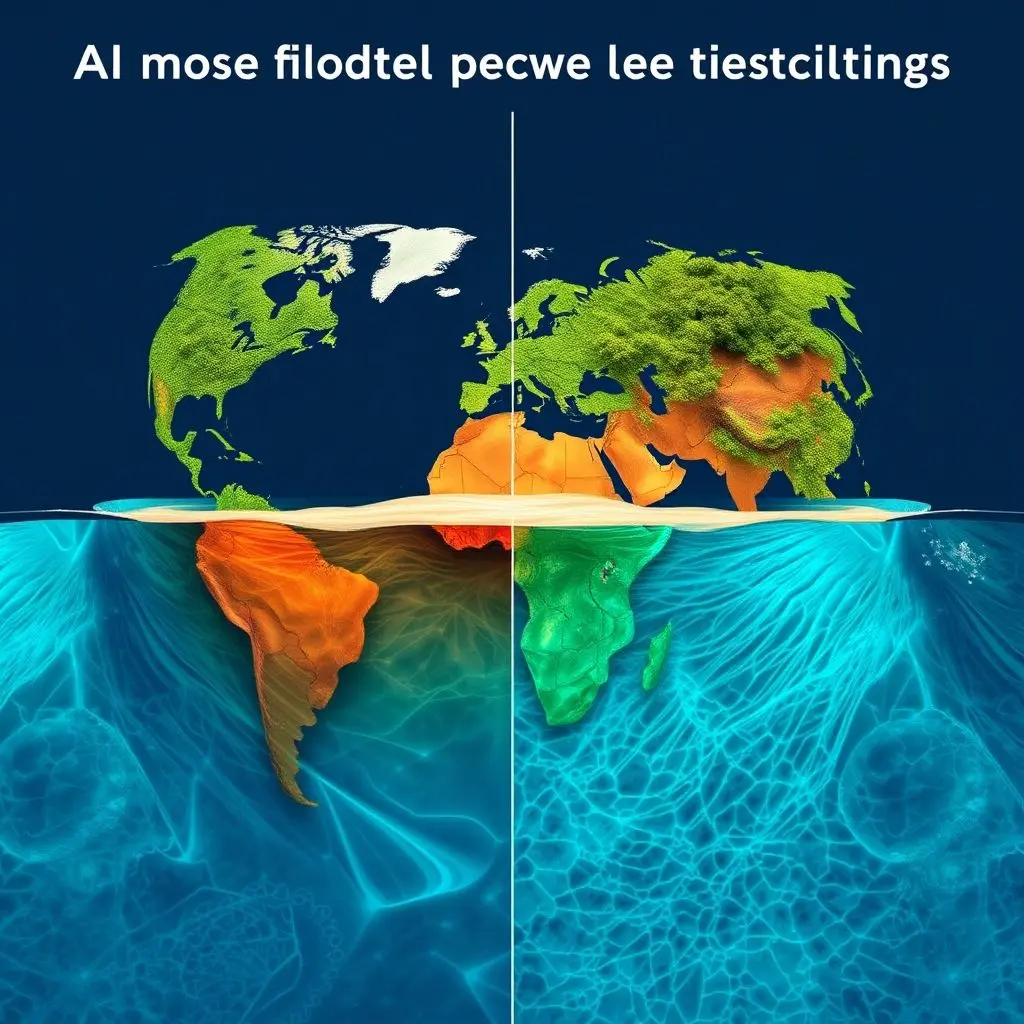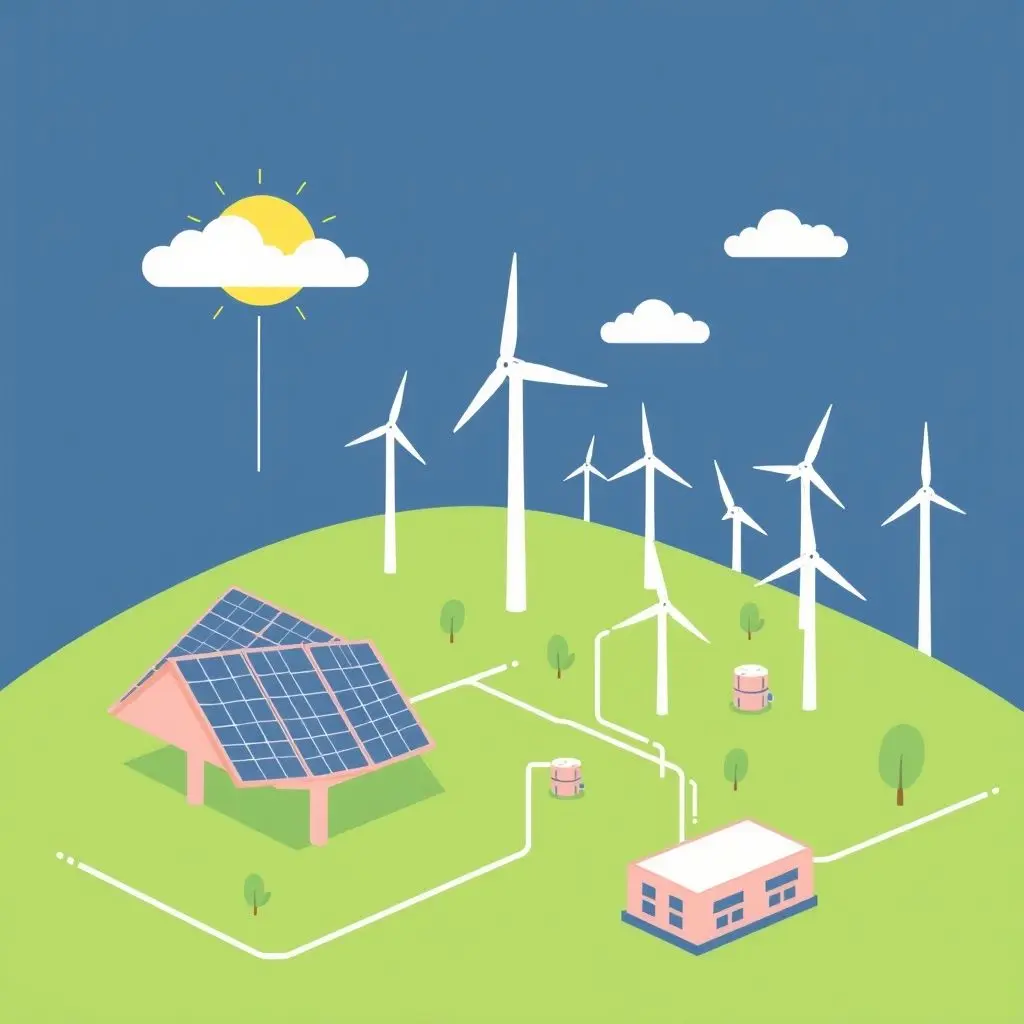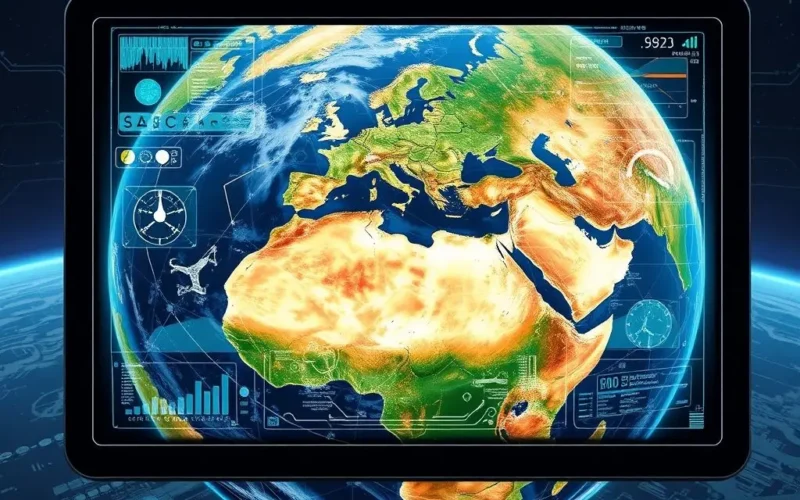When you think about climate models, do you just picture a slightly fancier weather report? It’s time to scale up that mental image – way, way up. We’re talking galaxy-brain levels of complexity here, because Artificial Intelligence has entered the arena, transforming how we understand and predict our planet’s future.
AI is essentially becoming the powerhouse for crunching truly staggering volumes of data. Imagine trying to manually process streams from thousands of satellites, countless ocean sensors, ground stations, and intricate atmospheric chemistry measurements. That’s the kind of data load that would make even a traditional supercomputer pause for breath.
But AI thrives on this challenge. It’s not merely predicting if you’ll need an umbrella next Tuesday; it’s diving deep into complex systems to model how entire ecosystems might shift under changing conditions, how rising sea levels could fundamentally redraw our coastlines and maps, and even pinpointing the most effective strategies for implementing crucial solutions like carbon capture technologies or optimizing the deployment of renewable energy sources.
In essence, AI is taking the chaotic, interconnected complexity of Earth’s climate systems and helping us translate it into clearer insights and more informed choices for the future of our planet.
Speaking of clearer insights and brain-boosting breakthroughs, we put together a quick look at this very topic. Check it out:
Table of Contents
Why Traditional Climate Models Needed a Boost
For decades, climate scientists have relied on sophisticated mathematical models run on supercomputers. These models divide the Earth into a grid and use fundamental physics equations to simulate how energy, water, and air move and interact. They’ve been remarkably successful in building our foundational understanding of climate change.
However, the Earth system is incredibly intricate. These models face limitations:
- Computational Limits: Running these models at high spatial and temporal resolutions (smaller grid cells, shorter time steps) requires immense computing power, often making long-term, high-detail simulations impractical.
- Representing Complexity: Some processes, like cloud formation, turbulence, or the interaction between ecosystems and the atmosphere, are incredibly complex and occur at scales smaller than the model grid, requiring simplified approximations (parameterizations). These simplifications introduce uncertainty.
- Data Overload: While models are data-hungry for initialization and validation, the sheer volume and variety of observational data (satellite imagery, sensor networks, historical records) can be overwhelming for traditional methods to fully integrate and learn from in real-time.
This is where Artificial Intelligence, particularly Machine Learning (ML), steps in, offering powerful new ways to handle data, identify patterns, and improve the efficiency and accuracy of climate simulations.

AI: The New Powerhouse for Climate Understanding
AI is not necessarily replacing traditional climate models entirely, but rather augmenting and accelerating them. Here’s how AI is becoming a game-changer:
1. Devouring and Interpreting Vast Datasets
AI excels at processing massive, diverse datasets that are characteristic of climate science. Machine learning algorithms can ingest petabytes of data from sources like:
- Satellite Imagery: Tracking ice melt, deforestation, atmospheric composition, ocean color, and land surface changes.
- Ground and Ocean Sensors: Monitoring temperature, humidity, ocean currents, pH levels, and greenhouse gas concentrations.
- Historical Climate Records: Analyzing centuries of weather data, ice cores, and tree rings.
- Climate Model Outputs: Learning from existing simulations to identify biases or patterns.
AI algorithms, like deep learning neural networks, can identify subtle patterns, correlations, and anomalies within this data that might be missed by human analysts or simpler statistical methods. This allows for more comprehensive initialization and validation of climate models.
2. Modeling Complex and Non-Linear Relationships
Climate systems are full of feedback loops and non-linear interactions. Small changes can sometimes lead to large, unexpected consequences. AI is particularly adept at learning these complex, non-linear relationships directly from data, without needing explicit programming for every possible interaction.
- Improved Parameterizations: AI can learn from high-resolution simulations or observational data to create more accurate and computationally efficient parameterizations for complex sub-grid processes like clouds or convection, improving the realism of larger-scale models.
- Emulating Processes: In some cases, AI models can be trained to ’emulate’ or mimic specific components of a complex climate model or even entire climate processes (like atmospheric dynamics) much faster than traditional methods, enabling quicker simulations for certain applications.
3. Enhancing Prediction Accuracy and Resolution
By learning from historical data and complex model outputs, AI can help refine predictions:
- Downscaling: AI can take coarse-resolution outputs from global climate models and generate higher-resolution predictions for specific regions, which is crucial for understanding local impacts.
- Bias Correction: Machine learning can identify and correct systematic biases in traditional model outputs by comparing them to observed data.
- Extreme Event Prediction: AI algorithms are being trained to identify precursors and patterns associated with extreme weather events like heatwaves, floods, and hurricanes, potentially improving forecasting skill for these high-impact events.

Beyond Prediction: AI for Mitigation and Adaptation
The power of AI in climate science isn’t limited to just telling us what might happen. It’s increasingly being applied to find solutions and strategies:
Optimizing Carbon Capture and Storage (CCS)
AI can analyze geological data to identify the most suitable locations for carbon storage. It can also optimize the energy efficiency and effectiveness of CCS processes by predicting optimal operating parameters based on various inputs.
Improving Renewable Energy Deployment and Grid Management
Predicting the output of intermittent renewable sources like solar and wind power is crucial for grid stability. AI can significantly improve these forecasts by analyzing weather patterns, satellite data, and historical performance. Furthermore, AI can optimize the dispatch and storage of energy within the grid, making it more resilient and efficient as renewables are integrated.

Identifying Vulnerable Regions and Designing Resilience
By combining climate model outputs with socioeconomic, geographic, and infrastructure data, AI can identify populations and areas most vulnerable to climate impacts like sea-level rise, heat stress, or water scarcity. This information is vital for urban planning, resource management, and designing climate-resilient infrastructure.
Navigating the Challenges and Looking Ahead
While the potential is immense, using AI in climate science isn’t without hurdles:
- Data Quality and Bias: AI models are only as good as the data they’re trained on. Biased or incomplete data can lead to flawed predictions. Ensuring data quality and representativeness is critical.
- Explainability: Some powerful AI models, like deep neural networks, can be complex ‘black boxes,’ making it difficult to understand exactly *why* they make a particular prediction. In a field where understanding mechanisms is crucial, this lack of explainability can be a barrier to trust and adoption.
- Computational Resources: Training large AI models, especially deep learning models, can still require significant computational power and energy, although often less than running equivalent high-resolution traditional simulations repeatedly.
- Ethical Considerations: As AI-driven climate predictions and solutions become more influential, ensuring equitable access to these tools and considering the potential societal impacts is paramount.
Despite these challenges, the integration of AI into climate change modeling and response is accelerating. Researchers are working on developing more interpretable AI models and hybrid approaches that combine the strengths of physical models with the data-driven power of machine learning.

AI is not a magic bullet, but it is rapidly becoming an indispensable tool in our efforts to understand the unprecedented changes happening to our climate and to develop effective strategies to adapt and mitigate the most severe impacts. It’s about turning complex chaos into clearer, actionable choices for our planet’s future.
Frequently Asked Questions About AI and Climate Modeling
Q: Can AI replace traditional climate models?
A: Not entirely, at least not yet. AI is currently most powerful when used alongside or to enhance traditional physics-based models. Hybrid approaches, combining the strengths of both, are seen as the most promising path forward. AI excels at pattern recognition and data processing, while traditional models provide the foundational physical understanding.
Q: Is AI only used for predicting future climate?
A: No, its applications are much broader. While prediction is a key area, AI is also used for analyzing historical data, attributing climate events, optimizing climate solutions (like renewable energy integration or carbon capture), and assessing climate risks.
Q: Does using AI for climate modeling use a lot of energy?
A: Training large AI models can be computationally intensive and thus energy-consuming. However, once trained, running AI models can sometimes be faster and more energy-efficient than running complex traditional simulations repeatedly. The net energy impact depends on the specific application and scale.
Q: How does AI help with extreme weather events?
A: AI can analyze vast amounts of atmospheric and oceanic data to identify subtle patterns and precursors that often precede extreme events. This can lead to improved short-term forecasts and early warning systems for things like heatwaves, droughts, heavy rainfall, and tropical cyclones.
Charting a Course with Smarter Tools
The integration of artificial intelligence into climate change modeling marks a pivotal moment in our ability to grasp the full scope of this global challenge. By equipping scientists with tools that can process unimaginable amounts of data and uncover hidden connections, we are gaining unprecedented clarity on the potential trajectories of our climate system.
This enhanced understanding is crucial, not just for refining our predictions, but for empowering decision-makers with the knowledge needed to implement effective mitigation and adaptation strategies. From designing smarter, more resilient cities to optimizing the transition to clean energy, AI is providing the analytical muscle required to navigate the complex path ahead.
As AI technology continues to evolve, its role in environmental science will undoubtedly deepen, offering new avenues for innovation and insight. It represents a significant step forward in our collective effort to secure a sustainable future for the planet.




